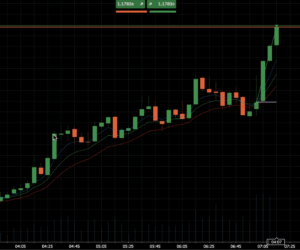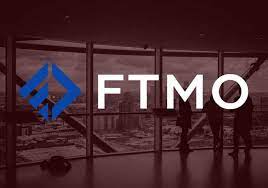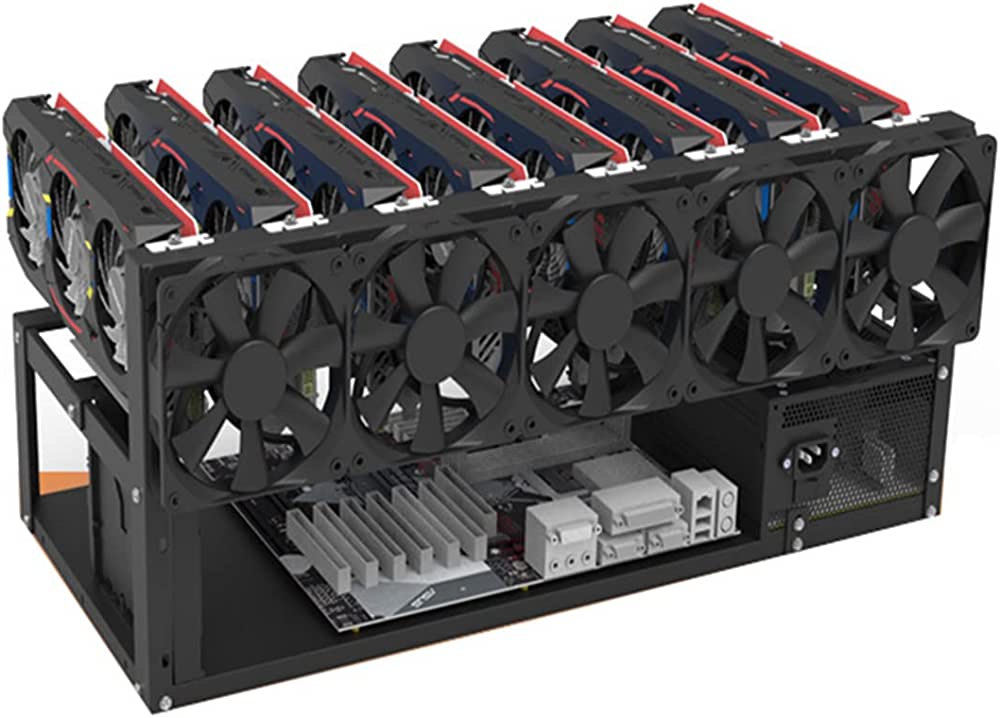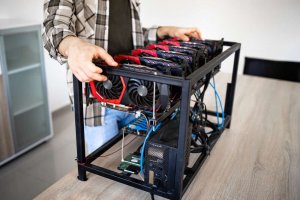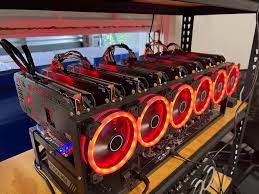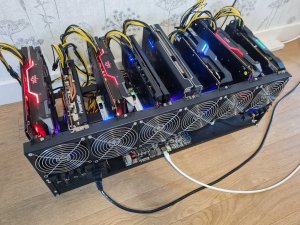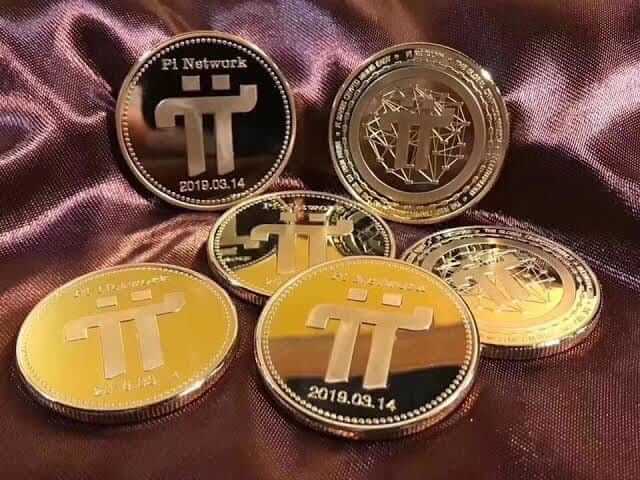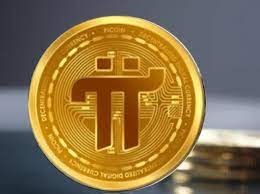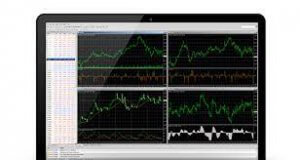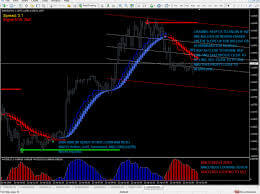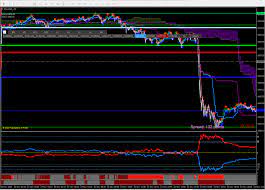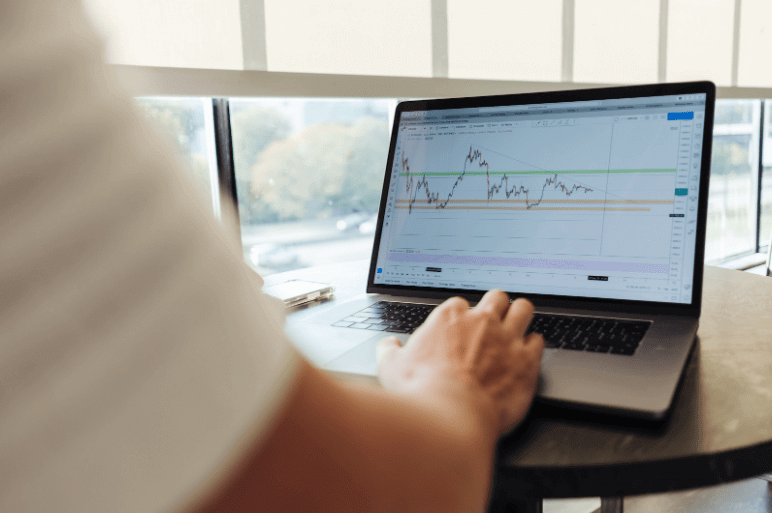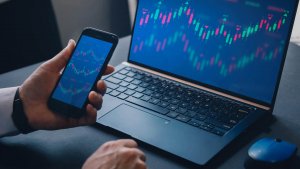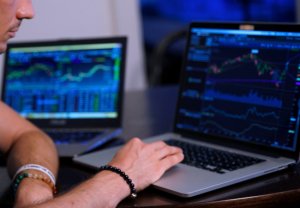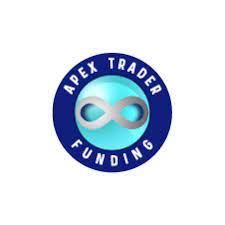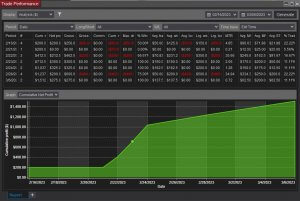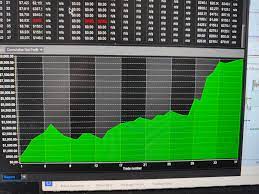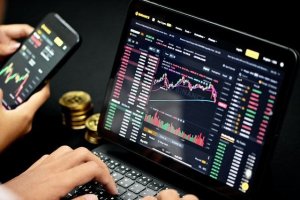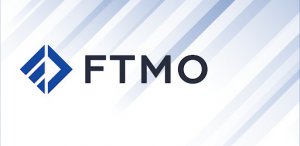
Introduction
Welcome to the intriguing world of proprietary trading with FTMO Trading. Offering unique opportunities for traders, understanding FTMO is critical for anyone looking to venture into proprietary trading.
Understanding FTMO Trading
In the financial world, proprietary trading firms are integral players, and FTMO Trading has emerged as a leading entity in this space. The company, which has its roots in the Czech Republic, provides a unique platform for traders worldwide.
At the heart of FTMO Trading is a model that is both innovative and challenging. The company doesn’t simply let traders handle their capital without vetting. Instead, they have a rigorous evaluation process known as the FTMO Challenge. This is a two-step process that is designed to sift out those traders who are capable of managing the capital with discipline, skill, and a comprehensive understanding of risk.
The first step involves the trader demonstrating their trading skills and strategy in a simulated environment. This stage assesses the trader’s profitability and consistency. If successful, the trader moves to the second step, which evaluates their trading discipline and adherence to risk parameters over a longer period. The second stage, also known as the Verification stage, tests whether the trader can consistently implement their successful strategies while managing risk effectively.
Upon successful completion of these steps, the trader becomes an FTMO Trader, granting them access to FTMO’s capital for trading. This process is a testament to FTMO’s commitment to ensuring that only the most competent traders are entrusted with their capital. It helps maintain a high standard of trading and safeguards the capital from unnecessary risks.
FTMO Trading stands apart due to its supportive approach towards its traders. The company doesn’t view the relationship with its traders as merely transactional. Instead, FTMO aims to create a supportive environment where traders can learn, grow, and enhance their trading skills.
To facilitate this, FTMO Trading provides various educational resources, including webinars, articles, and tools that can help traders sharpen their skills. Furthermore, FTMO offers a mentoring program where traders can receive personalized guidance and advice from seasoned traders.
In essence, FTMO Trading is more than just a proprietary trading firm. It is a platform that cultivates successful traders by providing them with capital, education, and a supportive community. By maintaining high standards, offering educational resources, and fostering a strong trader community, FTMO continues to solidify its position in the trading industry.
Key Features of FTMO Trading
In the realm of proprietary trading, FTMO Trading distinguishes itself with unique and trader-friendly features. These features, designed with the aim of aiding and amplifying the success of traders, set FTMO apart from other firms in the industry.
One of the primary features of FTMO Trading is its unique proprietary trading concept. This concept allows traders to operate with substantial capital provided by the firm, alleviating the need for traders to risk their personal funds. By taking on the financial risk, FTMO provides traders with the opportunity to focus on strategy and skill development, significantly enhancing the trading experience.
The evaluation process in FTMO Trading is another defining feature. The firm employs a two-step evaluation process comprising the FTMO Challenge and the Verification stage. This thorough vetting process is designed to assess a trader’s abilities in a realistic trading environment. It ensures only skilled and disciplined traders are accepted to trade FTMO’s capital, safeguarding the firm’s interests while providing traders with a clear path to becoming funded traders.
Moreover, FTMO Trading‘s profit split model adds to its appeal. Successful traders share their profits with the firm, creating a win-win situation. This incentivizes traders to perform well and facilitates a strong alignment of interests between the traders and the firm. The profit split varies based on the trader’s performance, providing an opportunity for high-achieving traders to earn significantly.
Furthermore, FTMO Trading goes above and beyond to ensure traders’ financial safety with its loss coverage feature. While traders share in the profits, they are not liable for losses beyond their initial fee paid to take the FTMO Challenge. This loss coverage feature not only reduces financial risk for the trader but also reinforces the firm’s commitment to its traders.
Benefits of Trading with FTMO
Venturing into the world of proprietary trading can be both exciting and challenging. The decision to trade under a proprietary trading firm such as FTMO Trading comes with a host of benefits. Understanding these benefits can greatly help traders in making an informed decision.
One of the primary benefits of FTMO Trading is the access to significant trading capital. Unlike personal trading accounts where your trading capital is limited by your personal finances, FTMO provides you with a larger capital to trade. This allows for the potential of more significant profits, while also distributing risk.
Next, FTMO Trading employs a profit-sharing model, which can be highly advantageous for successful traders. After passing the FTMO Challenge and Verification process, traders receive a substantial percentage of the profits they generate. This incentivizes traders to perform well and rewards consistent profitability.
Risk management is another crucial area where FTMO Trading stands out. The firm has clear risk parameters in place, and they protect their traders with loss coverage. This means that even when trades don’t go as planned, FTMO covers the losses, thereby reducing the risk of financial loss for the trader.
Another critical benefit of FTMO Trading is its strong focus on education and continual learning. They offer a wide array of educational resources, including webinars, articles, and software tools. These resources can prove to be invaluable for traders, helping them to refine their strategies and keep up with evolving market trends.
Furthermore, the support and mentorship provided by FTMO Trading can be a significant advantage, especially for novice traders. They have a dedicated support team that can assist with questions or issues that may arise. Their mentorship program also provides guidance and personalized advice, which can significantly improve trading performance.
Finally, being a part of the FTMO Trading community opens doors to networking and collaboration opportunities. Engaging with other FTMO traders can lead to sharing of insights and experiences, which can further contribute to your trading knowledge and expertise.
Preparing for the FTMO Challenge
Embarking on the journey of FTMO Trading involves taking the first significant step – preparing for the FTMO Challenge. The FTMO Challenge is a two-step evaluation process designed to ascertain your trading abilities and your knack for managing risk. Proper preparation can significantly increase your chances of becoming a funded trader with FTMO.
To prepare for the FTMO Challenge, you’ll need to focus on a few key areas: understanding the Challenge rules, developing a robust trading strategy, and mastering risk management.
Understanding the Challenge rules is essential. The rules outline the objectives you’ll need to meet to pass the Challenge. FTMO Trading sets specific profit targets and maximum loss limits that you must adhere to, both on a daily basis and overall. Familiarizing yourself with these rules can help you design a trading strategy that aligns with them.
Developing a trading strategy that works within the confines of the FTMO Challenge is the next step. Remember, FTMO Trading is not just testing your ability to generate profits but also your capacity to protect the trading capital. Your strategy should, therefore, be centered around achieving the necessary profit targets while staying within the maximum loss limits.
Risk management is another critical area to focus on when preparing for the FTMO Challenge. FTMO Trading places great emphasis on effective risk management, as this protects their capital and shows that you can trade responsibly. Understanding risk management principles and how to apply them in your trading is a key component of your preparation.
Another part of preparation should be spent on getting to know the trading platform and tools provided by FTMO Trading. Being comfortable with the platform will ensure smooth operation when you start trading. Moreover, FTMO offers various tools that can aid in your trading, understanding these tools and how to utilize them could provide you with an edge.
Lastly, continually educating yourself and staying updated with market trends is equally important. FTMO Trading provides educational resources that can be useful in your preparation. Leveraging these resources can enhance your market knowledge and trading skills.
Understanding Risk Management with FTMO
Effective risk management is a crucial aspect of FTMO Trading that all traders must comprehend and implement. The platform emphasizes the importance of risk control to protect its capital and ensure long-term profitability. Let’s delve deeper into how risk management is approached within the framework of FTMO Trading.
1. Setting Risk Parameters
FTMO Trading sets specific risk parameters that traders must adhere to while executing trades. These parameters define the maximum allowable risk per trade or per day, ensuring that traders maintain a disciplined approach to risk management. By following these guidelines, traders can avoid excessive losses and protect FTMO’s capital.
2. Position Sizing and Stop Loss Orders
Position sizing is a critical component of risk management in FTMO Trading. Traders must carefully determine the appropriate size of each trade based on the available capital and risk parameters. This ensures that no single trade has the potential to significantly impact the overall portfolio.
Stop loss orders are another essential tool for risk management. They enable traders to set predetermined exit points for their trades, limiting potential losses. By using stop loss orders effectively, traders can automatically exit losing positions before losses become unmanageable.
3. Diversification
Diversification is a fundamental risk management strategy employed by traders on the FTMO platform. Instead of concentrating their capital on a single trade or a handful of assets, traders diversify their portfolios by spreading their investments across multiple trades and different asset classes. This strategy helps mitigate the impact of any individual trade or market volatility on the overall portfolio.
4. Regular Monitoring and Analysis
Successful risk management in FTMO Trading requires continuous monitoring and analysis of trades and market conditions. Traders need to regularly review their positions, reassess risk levels, and adjust their strategies accordingly. This active approach allows traders to identify potential risks or weaknesses in their portfolio and take timely action to mitigate them.
5. Risk-Reward Ratio
The risk-reward ratio is an essential concept in risk management. Traders on the FTMO platform are encouraged to assess the potential reward of a trade in relation to the associated risk. By identifying trades with a favorable risk-reward ratio, traders can make informed decisions that align with their risk management goals.
6. Constant Learning and Adaptation
Risk management is not a one-time task but an ongoing process. FTMO Trading recognizes the importance of continual learning and adaptation in managing risks effectively. Traders are encouraged to stay updated with market trends, strategies, and risk management techniques. By staying informed and adapting to changing market conditions, traders can enhance their risk management skills and make informed trading decisions.
Navigating FTMO’s Trader Community
The FTMO Trading community serves as a valuable resource for traders looking to connect with like-minded individuals and enhance their trading skills. Engaging with the trader community within the FTMO ecosystem provides a platform for knowledge sharing, support, and collaboration, ultimately contributing to the growth and success of individual traders.
Connecting with Fellow Traders
Within the FTMO Trading community, traders have the opportunity to connect with fellow traders from around the world. Engaging in discussions and interactions with traders who share a common interest in proprietary trading can be insightful and enriching. These connections can lead to the exchange of ideas, strategies, and experiences, fostering a sense of camaraderie among traders.
Sharing and Discussing Trading Strategies
The trader community is an ideal platform for sharing and discussing various trading strategies. Traders can talk about their preferred methods, indicators, and approaches to the market. By participating in these discussions, traders gain exposure to different perspectives and may discover new strategies that align with their trading style and objectives. The FTMO Trading community becomes a hub for learning and refining trading strategies.
Receiving Support and Feedback
In the FTMO Trading community, traders can seek support and feedback from their peers. Whether it’s troubleshooting technical issues, seeking advice on risk management, or analyzing trade setups, fellow traders can provide valuable insights and guidance. Engaging with experienced traders who have already gone through the FTMO Trading evaluation process can offer a unique perspective and help overcome challenges more effectively.
Collaborative Learning and Mentorship Opportunities
The community environment fosters collaborative learning, where traders can collectively work towards refining their skills. Traders can form study groups, share educational resources, and participate in joint trading analysis. This collaborative approach not only accelerates the learning process but also creates mentorship opportunities. Established traders can guide and mentor newcomers, sharing their knowledge and expertise, thereby nurturing the growth of aspiring traders.
Staying Updated on FTMO News and Updates
The trader community also serves as a platform to stay updated on the latest news, updates, and announcements from FTMO Trading. This ensures that traders are aware of any policy changes, new features, or upcoming events within the platform. By actively participating in the community, traders can make the most of the opportunities provided by FTMO Trading.
The Future of Trading with FTMO
As the trading industry continues to evolve, FTMO Trading remains at the forefront of providing unique opportunities for traders. With its innovative model and commitment to traders’ success, FTMO is poised to shape the future of proprietary trading. Let’s delve into the potential growth and advancements in the FTMO Trading platform and explore how traders can capitalize on these opportunities.
One of the key factors that sets FTMO apart is its emphasis on continuous improvement and adaptation to market trends. As technology advances and new trading strategies emerge, FTMO Trading remains agile in incorporating these developments into its platform. By staying up-to-date with market dynamics and embracing cutting-edge technology, FTMO Trading aims to provide traders with an optimal trading experience.
In the future, we can expect FTMO to expand its range of trading instruments and markets. While the platform currently focuses on major financial markets such as forex, commodities, and indices, there is a potential for FTMO to incorporate emerging markets and alternative assets. This expansion will not only broaden the trading opportunities for FTMO traders but also allow them to diversify their portfolios and mitigate risk.
Another aspect that holds promise for the future of FTMO Trading is its commitment to investor education and mentorship. The platform’s dedication to providing traders with comprehensive educational resources will likely continue to expand. Traders can expect a wealth of educational materials, including webinars, tutorials, and market insights, to enhance their knowledge and trading skills. Moreover, FTMO’s mentorship programs, where experienced traders guide and support aspiring traders, will contribute to the development of a thriving trading community.
As the industry becomes increasingly digitized, FTMO Trading is well-positioned to leverage advanced technologies such as artificial intelligence (AI) and machine learning (ML) algorithms. These technologies can be harnessed to develop sophisticated trading tools and algorithms that assist traders in making informed decisions. Implementing AI and ML in risk management systems can also enhance the platform’s ability to identify and mitigate potential risks effectively.
Furthermore, FTMO Trading recognizes the importance of social trading and community engagement. The platform’s trader community serves as a valuable resource for knowledge sharing, idea generation, and collaboration. Going forward, we can anticipate FTMO to foster a vibrant and interactive community through various initiatives, including online forums, social media groups, and live trading events. Traders can connect with like-minded individuals, share trading strategies, and gain insights from seasoned professionals.
As the cryptocurrency market continues to gain momentum, FTMO Trading may explore opportunities to incorporate digital assets into its platform. While cryptocurrencies have their own unique challenges and risks, the potential for growth and profitability in this space cannot be ignored. By venturing into the cryptocurrency market, FTMO Trading can attract a new generation of traders and provide them with the tools and resources to navigate this evolving landscape.
Conclusion
FTMO Trading offers an attractive platform for traders looking to access substantial capital and trade in a supportive environment. The features, benefits, and future prospects make FTMO a significant player in the proprietary trading landscape.
